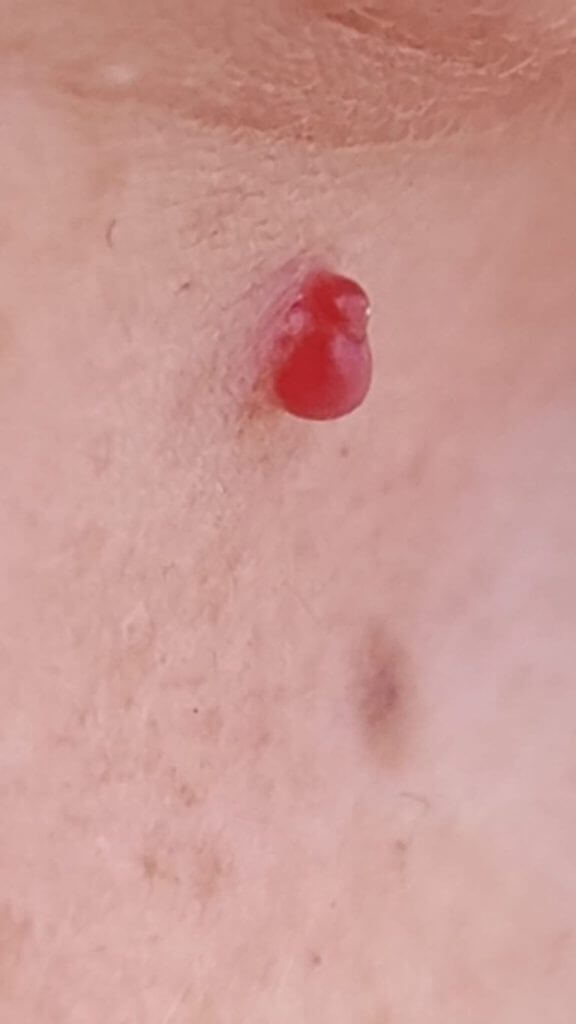
Pyogenic granuloma
Pyogenic granuloma is a benign skin finding that is made up of blood vessels. This topic will be explained by the senior pediatric dermatologist Dr Shiran Reiss-Hoss, and you can find out more about her in the link here.
What is a pyogenic granuloma?
This is a benign skin tumor that is made up of blood vessels and typically presents on the face, the fingers or inside the mouth.
What causes a pyogenic granuloma to develop?
The exact cause of the lesion is unknown. However, this lesion often appears because of injury/localized trauma, medications, or hormonal changes. That is why it is commonly found in children and pregnant women.
What is the characteristic appearance of the lesion and how does it change over time?
The characteristic appearance is that of a swelling/vascular nodule that is soft, red, and may or may not have a peduncle. It has a tendency to bleed. See the image attached.
When the lesion first appears, it tend to grow rapidly and bleed often. It is expected to disappear within weeks/months.
The lesion is not painful.
What other diagnoses should we consider when we see such a lesion?
There are additional medial conditions that can mimic the appearance of pyogenic granuloma, including vascular tumors as well as other tumors. It is therefore important to get the lesion examined by a dermatologist.
How should pyogenic granulomas be treated?
Some cases of pyogenic granulomas resolve spontaneously. Other times, the physician will refer you for removal or will attempt to treat it with the help of topical products (creams).
When the diagnosis is straight forward and clear, the lesion can be removed with cauterization (nitrogen, electric needle or laser). When in doubt, a full resection and histological examination (pathology testing) is recommended.
Who can remove the lesion?
A physician who is a specialist in dermatology or a plastic surgeon can remove the lesion.
In summary, a very short but sweet chapter, about a lesion that we see here and there in pediatrics. Fortunately, like most things, it usually resolves spontaneously without treatment.
In summary:
For comments and questions, please register
